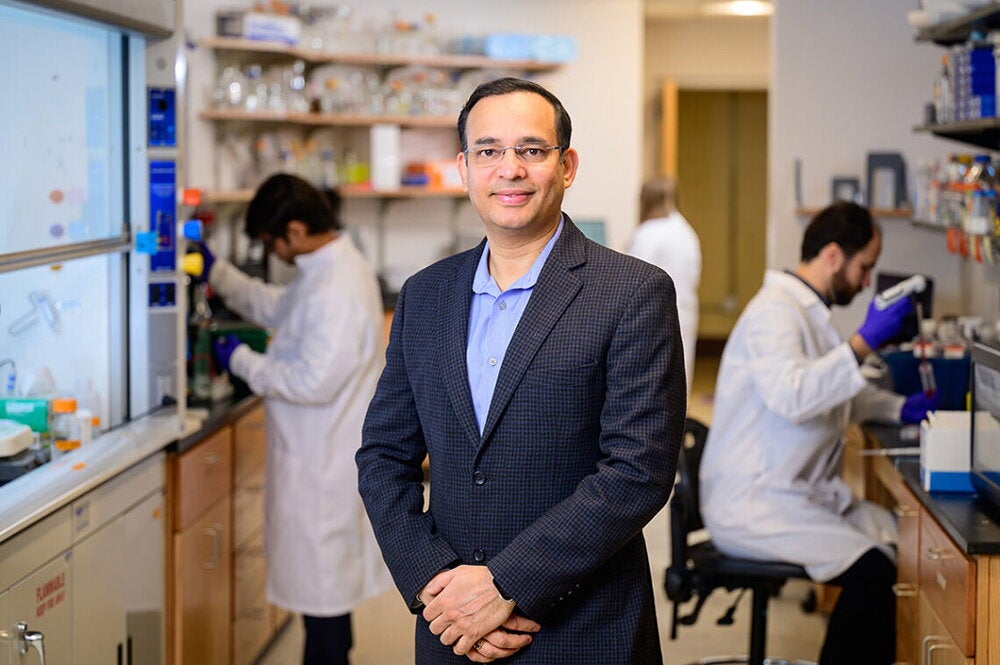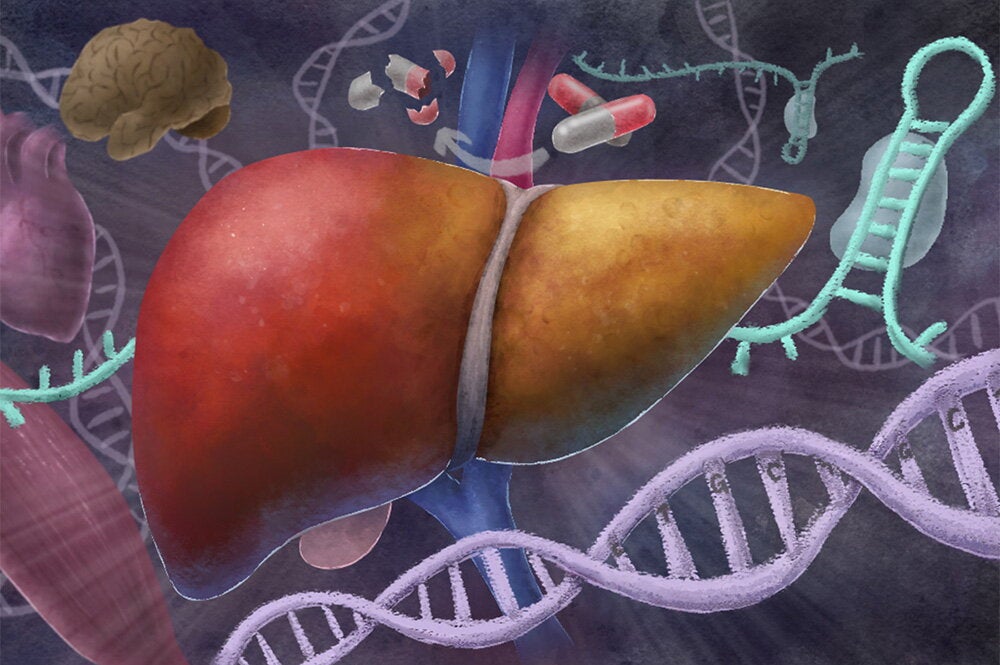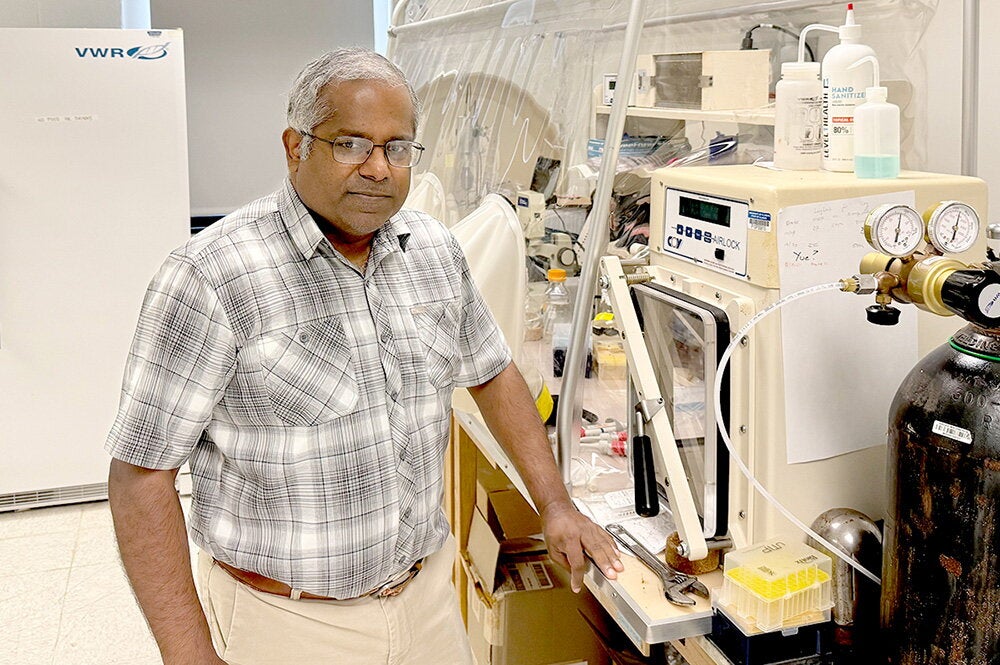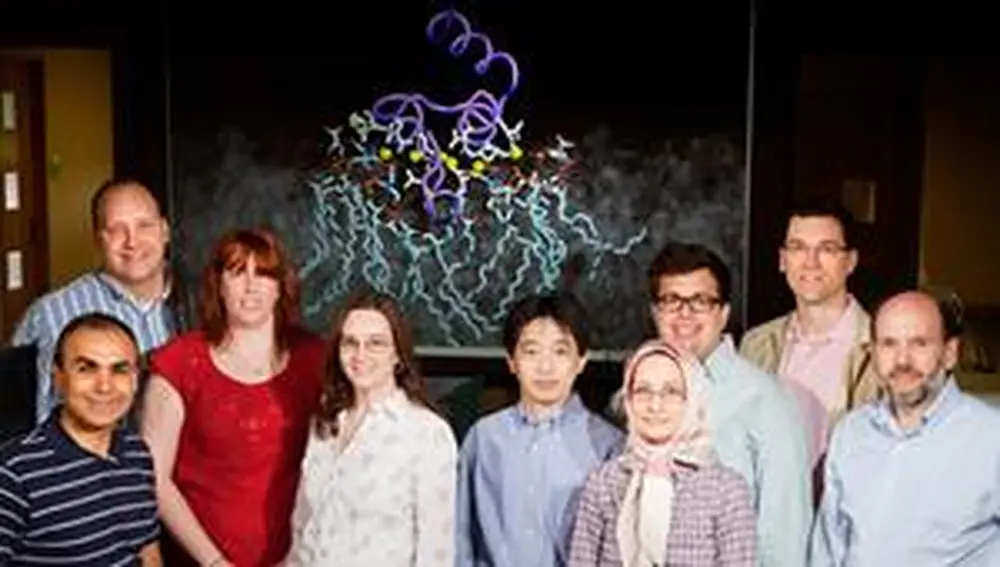
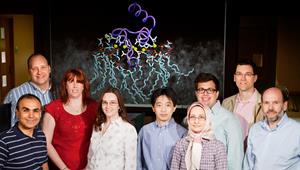
You’re chopping wood when the ax slips and you suddenly find yourself staring in shock at a deep gash in your leg. While you call for medical help, your body is already in emergency mode on a microscopic level, ringing its own version of 911 to stop the bleeding.
The muscles around your blood vessels contract, attempting to choke off the bleeding. Platelets also become activated and they form a platelet plug that pulls the wound together. Meanwhile, the blood-clotting system goes into full gear, as it converts blood plasma near the wound from liquid to a thick gel.
James Morrissey, an LAS biochemist, has been studying the body’s blood-clotting system for over 20 years, beginning when he first cloned “tissue factor,” the triggering agent for clotting. Most recently, his lab—working in conjunction with three other University of Illinois labs—has shed light on how blood-clotting proteins bind with cell membranes, creating a cascade of chemical reactions in the clotting process.
This research could have an impact on the development of drug treatments to prevent dangerous clots from forming in the bloodstream, as well as treatments that promote clotting in hemophiliac patients.
“We want a blood clot to form where there is injury, but we don’t want the clot to keep growing,” says Morrissey. “So there have to be mechanisms to limit blood-clotting reactions to the areas of injury. The binding of blood-clotting proteins to cell membranes is one of those mechanisms.”
Scientists already know that when an injury occurs, two types of phospholipids—PS and PE—are exposed on the surface of ruptured cells. Normally, PS and PE exist on the inside of cell membranes, preventing clotting from taking place under normal circumstances. But when released from a ruptured cell, they appear on the outside of cell membranes, enabling blood-clotting proteins to anchor in the membrane.
This explains why a smooth cut, such as one from a sharp knife or piece of glass, will lead to more bleeding than a ragged wound, Morrissey says. If a cut is smooth, fewer cells are ruptured and less PS and PE are exposed to the bloodstream. With less PS and PE, blood-clotting happens more slowly and you bleed more heavily.
Specifically, scientists know that a little bit of PS, along with a larger quantity of PE, make it possible for the “GLA domain” on blood-clotting proteins to anchor to cell membranes. “But nobody knew how these GLA domains interacted with a membrane,” he says. “Nobody had a picture of what was going on at the membrane surface.”
That is, until now.
The lab of Illinois biochemistry professor Emad Tajkhorshid, working with Morrissey’s team and two other U of I labs, ran sophisticated computer simulations that made a good case for what is happening. According to Morrissey, they found that PS has one specific binding site for the GLA domain, which anchors the blood-clotting protein to the cell membrane. This primary anchor makes it possible for the phosphorus in PE to bind with calcium, further holding the blood-clotting protein in place.
In fact, they also found that PS will work in conjunction with other, less abundant phospholipids, except for PC, which contains choline. That’s why they call their hypothesis the ABC Hypothesis—“Anything But Choline.” This hypothesis was successfully tested in the lab.
One of the most popular anti-coagulants (or “blood thinners”) on the market is warfarin, which interferes with the liver’s ability to make GLA domains. This, in turn, weakens the ability of blood-clotting proteins to anchor to cell membranes, stifling the clotting process and reducing a patient’s threat of unwanted clots.
But there are side effects to warfarin because it hits both anti-coagulant and pro-coagulant proteins. “So getting the right dose is tricky,” Morrissey says.
The Illinois research could help refine this and other blood treatments.
Morrissey says their work would not be possible without the unique environment at the U of I, which fosters cooperation among the four labs—Morrissey’s lab, along with the labs of Chad Rienstra in chemistry and Tajkhorshid and Stephen Sligar in biochemistry.
“It’s the most intense and rewarding collaboration I’ve ever entered into,” Morrissey says. “I don’t know another place on earth right now where you can get this collection of expertise together to tackle the problem of blood clotting. It’s really unique.”
